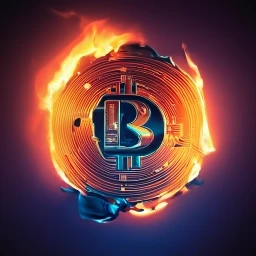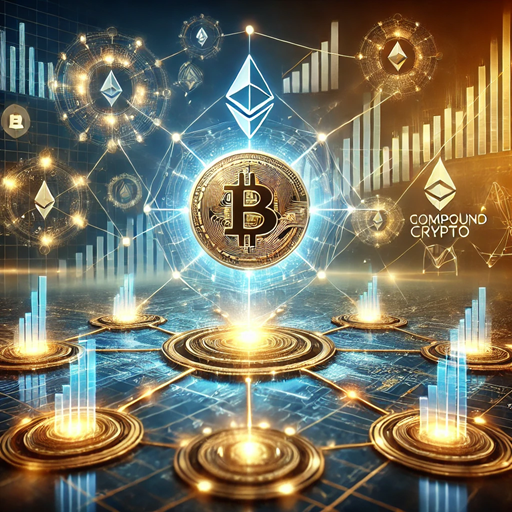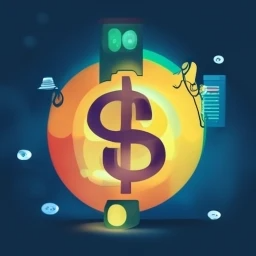„Proof of Burn“ (PoB) is an innovative consensus algorithm used in blockchain technology to ensure the security and validity of transactions within a network. This article delves into the concept of proof of burn, its mechanism, benefits, and applications in the evolving landscape of blockchain technology.
What is Proof of Burn?
Proof of Burn is a consensus mechanism where participants „burn“ their cryptocurrency tokens to gain the privilege of mining or validating transactions on the blockchain. Burning tokens means sending them to an address where they become irretrievable, effectively removing them from circulation. This process demonstrates the participant’s commitment and investment in the network, securing their role in the mining process.
How Proof of Burn Works
Proof of Burn works on a simple yet effective principle. Participants send a certain amount of cryptocurrency to a verifiably unspendable address, often referred to as an „eater address.“ These tokens are then permanently removed from the supply, reducing the total number of tokens in circulation.
Step-by-Step Process of Proof of Burn:
- Selection of Burn Address: The network designates a specific address where tokens can be sent for burning. This address is publicly known and verifiably inaccessible.
- Burning Tokens: Participants send their tokens to the burn address. This transaction is logged on the blockchain, ensuring it is both transparent and immutable.
- Proof of Burn Verification: The network verifies the burn transaction. Once confirmed, the participant is granted mining or validation rights proportional to the amount burned.
- Mining/Validation Rights: Participants who have burned tokens gain the ability to mine new blocks or validate transactions. Their influence in the network is proportional to their burn investment.
Advantages of Proof of Burn
Proof of Burn offers several advantages that make it a compelling choice for certain blockchain projects. These benefits include:
Security and Investment Commitment
By requiring participants to burn their tokens, PoB ensures that only those with a significant investment in the network can participate in mining or validation. This reduces the likelihood of malicious actors attempting to compromise the system, as they would need to incur substantial costs to do so.
Long-Term Network Stability
The act of burning tokens reduces the overall supply of the cryptocurrency, which can lead to increased scarcity and potentially higher value over time. This mechanism aligns the interests of participants with the long-term success of the network, as their burned tokens effectively act as an investment in the blockchain’s future.
Environmental Considerations
Compared to Proof of Work (PoW) mechanisms, which require extensive computational power and energy consumption, Proof of Burn is relatively environmentally friendly. The process of burning tokens does not require significant energy resources, making it a more sustainable option for blockchain networks.
Applications of Proof of Burn
Proof of Burn can be applied in various blockchain scenarios, enhancing the functionality and security of decentralized networks. Some notable applications include:
Cryptocurrency Mining
In cryptocurrency networks, PoB can serve as an alternative to traditional mining methods. By burning tokens, miners gain the right to mine new blocks, ensuring a fair distribution of rewards based on their level of commitment.
Cross-Chain Asset Transfers
Proof of Burn can facilitate cross-chain asset transfers by allowing participants to burn tokens on one blockchain to receive equivalent tokens on another. This mechanism ensures a secure and verifiable transfer process without the need for intermediaries.
Initial Coin Offerings (ICOs)
For projects launching Initial Coin Offerings (ICOs), Proof of Burn can be used to demonstrate commitment and trustworthiness to potential investors. By burning a portion of their tokens, project teams can show their dedication to the project’s success and long-term viability.
Challenges and Criticisms of Proof of Burn
While Proof of Burn offers several advantages, it also faces some challenges and criticisms that need to be addressed:
Resource Wastage
One major criticism of PoB is the perceived wastage of resources. Burning tokens effectively removes valuable assets from circulation, which some argue is an inefficient use of resources that could otherwise be utilized within the ecosystem.
Centralization Concerns
There is a risk of centralization in PoB networks, as participants with significant financial resources can burn more tokens, thereby gaining disproportionate influence over the network. Ensuring a fair and balanced distribution of power is crucial to maintaining decentralization.
Economic Implications
The reduction in token supply due to burning can lead to increased scarcity and potential price volatility. While this can be beneficial for long-term holders, it may create challenges for the network’s stability and usability as a medium of exchange.
Future of Proof of Burn
Despite its challenges, Proof of Burn remains a promising consensus mechanism with potential for further development and application. As blockchain technology continues to evolve, PoB may be refined and integrated into more networks, offering a sustainable and secure alternative to traditional consensus methods.
Innovations and Improvements
Ongoing research and development in the blockchain space are likely to address some of the criticisms of PoB. Innovations such as hybrid consensus mechanisms, combining PoB with other algorithms like Proof of Stake (PoS), could mitigate centralization concerns and improve overall network efficiency.
Broader Adoption
As the blockchain ecosystem grows, more projects may adopt PoB to leverage its benefits. By aligning the interests of participants with the long-term success of the network, PoB can contribute to the creation of robust and resilient blockchain systems.
Conclusion
Proof of Burn is a unique and innovative consensus mechanism that offers several advantages for blockchain networks, including enhanced security, long-term stability, and environmental sustainability. While it faces some challenges, ongoing research and development hold the potential to address these issues and unlock new applications for PoB. As the blockchain landscape continues to evolve, Proof of Burn stands out as a compelling option for ensuring the security and integrity of decentralized networks.




















